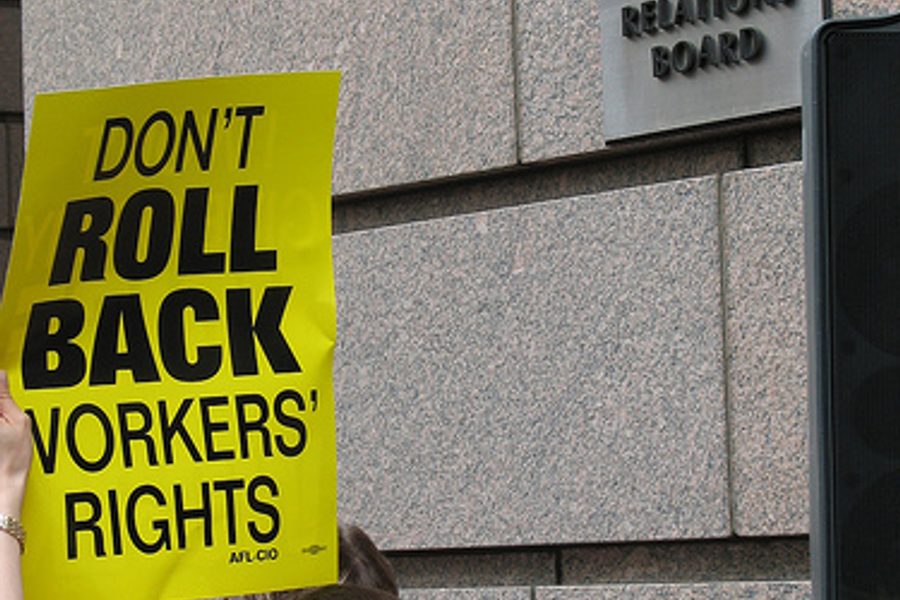A series of rules have been proposed recently by the National Labor Relations Board that improve the rights of workers on the job. The rule changes by the NLRB have been hailed by organized labor as great triumphs that will promote the right to organize. But some question whether the regulations go far enough.
In December, the NLRB ruled that employers must start posting the rights of workers to join a union. This decision was met by many congratulatory press releases celebrating a great victory for unions. AFL-CIO President Richard Trumka hailed these rules saying:
Every working person in America deserves to know his or her rights. Just as employers are currently required to post information regarding the laws that protect workers’ health and safety, their rights to a minimum wage and to a workplace free from discrimination, this rule ensures that workers’ rights are effectively communicated in the workplace. It is necessary in the face of widespread misunderstanding about the law and many workers’ justified fear of exercising their rights under it.
In November, the NLRB ruled that expressing one’s negative opinion of a boss using social media such as Facebook or Twitter was free speech protected by the Constitution. This was hailed as a major victory for workers trying to organize because it gave broader protection to workers criticizing their companies. In October, the NLRB issued a decision saying that employers now must electronically inform workers through email of their union busting violations. Previously companies were forced to only post a notice on a bulletin board.
Each time these rulings are issued by the NLRB, they are lauded as signs of great progress by organized labor. However while the NLRB has expanded the rights of workers in theory, it still has not changed the penalties for illegal union busting. Requiring an employee to send out an e-mail as opposed to posting a paper notice or having to post the rights of a worker to join a union does not change an employer’s behavior of intimidation.
Employers still face no serious financial penalties or lose government contracts for illegally firing a worker. Nor has the NLRB shortened the election period to seven days — as many in labor hoped — in order to prevent the boss from running effective intimidation campaigns for months. So why do so many in organized labors celebrate these rulings with such great hope?
What these ruling represent is that the NLRB has shown the willingness to change the rules ever so slightly in order to protect the rights of workers. The NLRB has shown it has the power and willingness to do it. However, until the NLRB is willing to issue tough penalties and improve voting conditions for workers, these expanded workers’ rights will help workers little as they exercise their right to organize.









